#Air India plane crash
Explore tagged Tumblr posts
Video
308th Bomb Group crashed B-24 Liberator Bomber by TK622 Via Flickr: A photo of an unidentified 308th Bomb Group Liberator. Location and date unknown, but likely near Kunming or Hsinching Airfield in China early 1945. A photo from the Album of Lt. George D. Bonner, Navigator in the 425th Bomb Squad, 308th Bomb Group, 14th Air Force
#B-24#Liberator#Bomber#Crash#Accident#wreck#WW2#World#War#Two#airplane#aircraft#plane#China#Burma#India#theater#308th#Bomb#Group#14th#Air#Force#George#D#Bonner#flickr
7 notes
·
View notes
Text
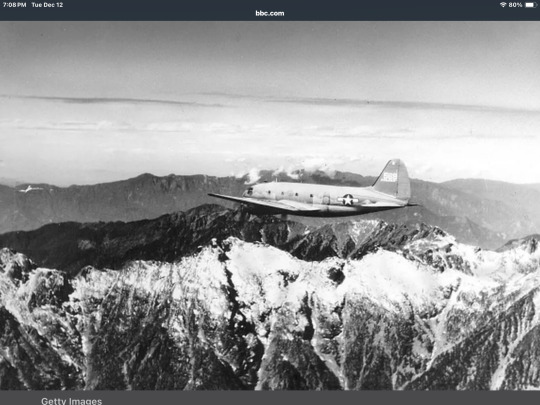
World War Two: When 600 US planes crashed in Himalayas
2 days ago
View of a US Army Air Transport Command cargo plane as it flies over the snow-capped, towering mountains of the Himalayas, along the borders of India, China, and Burma, January 1945, February 20, 1945.Getty Images
Pilots called the flight route "The Hump" - a nod to the treacherous heights of the eastern Himalayas
A newly opened museum in India houses the remains of American planes that crashed in the Himalayas during World War Two. The BBC's Soutik Biswas recounts an audaciously risky aerial operation that took place when the global war arrived in India.
Since 2009, Indian and American teams have scoured the mountains in India's north-eastern state of Arunachal Pradesh, looking for the wreckage and remains of lost crews of hundreds of planes that crashed here over 80 years ago.
Some 600 American transport planes are estimated to have crashed in the remote region, killing at least 1,500 airmen and passengers during a remarkable and often-forgotten 42-month-long World War Two military operation in India. Among the casualties were American and Chinese pilots, radio operators and soldiers.
Has India's contribution to WW2 been ignored?
The operation sustained a vital air transport route from the Indian states of Assam and Bengal to support Chinese forces in Kunming and Chungking (now called Chongqing).
The war between Axis powers (Germany, Italy, Japan) and the Allies (France, Great Britain, the US, the Soviet Union, China) had reached the north-eastern part of British-ruled India. The air corridor became a lifeline following the Japanese advance to India's borders, which effectively closed the land route to China through northern Myanmar (then known as Burma).
The US military operation, initiated in April 1942, successfully transported 650,000 tonnes of war supplies across the route - an achievement that significantly bolstered the Allied victory.
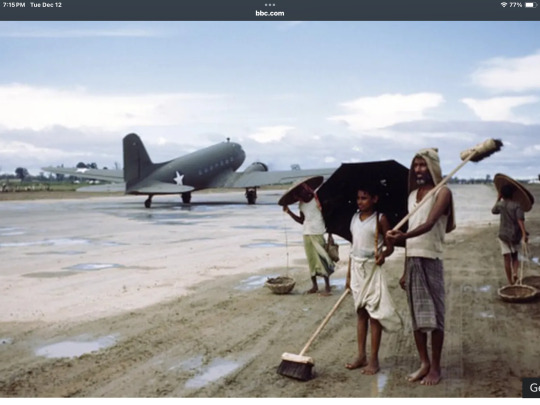
This operation sustained a vital air transport route from India to support Chinese forces in Kunming and Chunking
Pilots dubbed the perilous flight route "The Hump", a nod to the treacherous heights of the eastern Himalayas, primarily in today's Arunachal Pradesh, that they had to navigate.
Over the past 14 years Indo-American teams comprising mountaineers, students, medics, forensic archaeologists and rescue experts have ploughed through dense tropical jungles and scaled altitudes reaching 15,000ft (4,572m) in Arunachal Pradesh, bordering Myanmar and China. They have included members of the US Defense POW/MIA Accounting Agency (DPAA), the US agency that deals with soldiers missing in action.
The forgotten Indian soldiers of Dunkirk
With help from local tribespeople their month-long expeditions have reached crash sites, locating at least 20 planes and the remains of several missing-in-action airmen.
It is a challenging job - a six-day trek, preceded by a two-day road journey, led to the discovery of a single crash site. One mission was stranded in the mountains for three weeks after it was hit by a freak snowstorm.
"From flat alluvial plains to the mountains, it's a challenging terrain. Weather can be an issue and we have usually only the late fall and early winter to work in," says William Belcher, a forensic anthropologist involved in the expeditions.
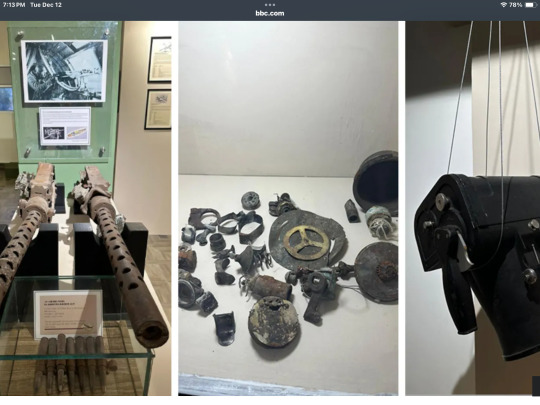
A machine gun, pieces of debris, a camera: some of the recovered artefacts at the newly opened museum
Discoveries abound: oxygen tanks, machine guns, fuselage sections. Skulls, bones, shoes and watches have been found in the debris and DNA samples taken to identify the dead. A missing airman's initialled bracelet, a poignant relic, exchanged hands from a villager who recovered it in the wreckage. Some crash sites have been scavenged by local villagers over the years and the aluminium remains sold as scrap.
These and other artefacts and narratives related to these doomed planes now have a home in the newly opened The Hump Museum in Pasighat, a scenic town in Arunachal Pradesh nestled in the foothills of the Himalayas.
US Ambassador to India, Eric Garcetti, inaugurated the collection on 29 November, saying, "This is not just a gift to Arunachal Pradesh or the impacted families, but a gift to India and the world." Oken Tayeng, director of the museum, added: "This is also a recognition of all locals of Arunachal Pradesh who were and are still an integral part of this mission of respecting the memory of others".
The museum starkly highlights the dangers of flying this route. In his vivid memoirs of the operation, Maj Gen William H Tunner, a US Air Force pilot, remembers navigating his C-46 cargo plane over villages on steep slopes, broad valleys, deep gorges, narrow streams and dark brown rivers.
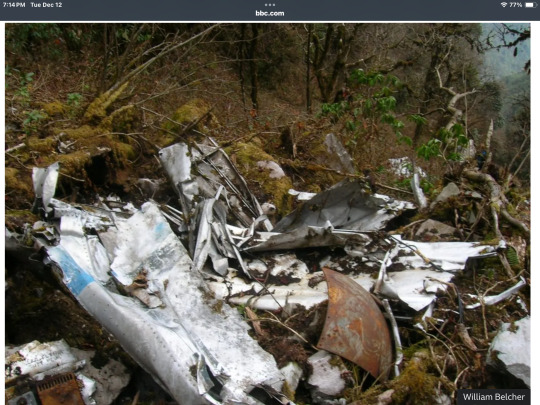
Wreckage of many planes has been found in the mountains in recent years
The flights, often navigated by young and freshly trained pilots, were turbulent. The weather on The Hump, according to Tunner, changed "from minute to minute, from mile to mile": one end was set in the low, steamy jungles of India; the other in the mile-high plateau of western China.
Heavily loaded transport planes, caught in a downdraft, might quickly descend 5,000ft, then swiftly rise at a similar speed. Tunner writes about a plane flipping onto its back after encountering a downdraft at 25,000ft.
Spring thunderstorms, with howling winds, sleet, and hail, posed the greatest challenge for controlling planes with rudimentary navigation tools. Theodore White, a journalist with Life magazine who flew the route five times for a story, wrote that the pilot of one plane carrying Chinese soldiers with no parachutes decided to crash-land after his plane got iced up.
The co-pilot and the radio operator managed to bail out and land on a "great tropical tree and wandered for 15 days before friendly natives found them". Local communities in remote villages often rescued and nursed wounded survivors of the crashes back to health. (It was later learnt that the plane had landed safely and no lives had been lost.)
Does Nolan's Dunkirk ignore the role of the Indian army?
Not surprisingly, the radio was filled with mayday calls. Planes were blown so far off course they crashed into mountains pilots did not even know were within 50 miles, Tunner remembered. One storm alone crashed nine planes, killing 27 crew and passengers. "In these clouds, over the entire route, turbulence would build up of a severity greater than I have seen anywhere in the world, before or since," he wrote.
Parents of missing airmen held out the hope that their children were still alive. "Where is my son? I'd love the world to know/Has his mission filled and left the earth below?/Is he up there in that fair land, drinking at the fountains, or is he still a wanderer in India's jungles and mountains?" wondered Pearl Dunaway, the mother of a missing airman, Joseph Dunaway, in a poem in 1945.
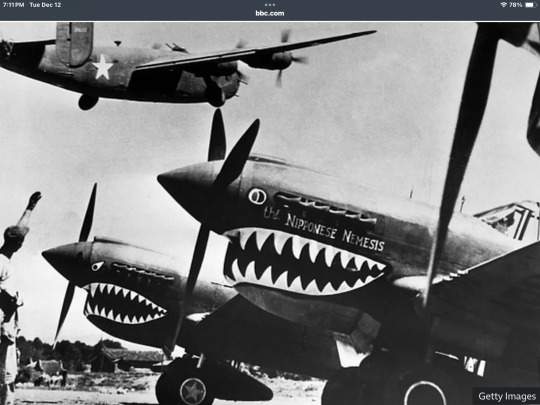
The China-bound US transport planes took off from airbases in India's Assam
The missing airmen are now the stuff of legend. "These Hump men fight the Japanese, the jungle, the mountains and the monsoons all day and all night, every day and every night the year round. The only world they know is planes. They never stop hearing them, flying them, patching them, cursing them. Yet they never get tired of watching the planes go out to China," recounted White.
The operation was indeed a daredevil feat of aerial logistics following the global war that reached India's doorstep. "The hills and people of Arunachal Pradesh were drawn into the drama, heroism and tragedies of the World War Two by the Hump operation," says Mr Tayeng. It's a story few know.
13 notes
·
View notes
Note
star of the whatsit???
Way back when aviation was still young and glamorous and basically just treated like a new type of luxury ocean liner airlines would all name their airplanes and they generally had themes. TWA would name their planes "Star of [Place]". I can't find any mention of when exactly this practice died out but the last explicit confirmation of them doing it that I could find was in 1983 with N610TW "Star of Geneva".
This wasn't uncommon. American Airlines had Flagships and United had Mainliners and these both died out too. Sure, they both have incomprehensibly huge fleets now, but that's no excuse in my opinion. Name your thousand large flying daughters. Name them. There were the Canadian Pacific Empresses and the Piedmont Pacemakers and of course there were the Pan Am Clippers.
There's still a few really great naming traditions out there, though. Like I mentioned before a lot of flag carriers do cities but I think the most stately is Air India's habit of naming theirs after emperors. I believe EgyptAir at least sometimes do pharaohs as well. A lot of airlines do influential philosophers and poets and such. And jetBlue of course does silly funny jokes. National and FedEx do regular human names (you know, if I were the owner of National I think if the plane I named after my wife were to crash in a horrible accident I would not rename another plane after her because it would be tempting fate, but that's just me). I find it inexplicably hilarious that the plane involved in FedEx flight 705 was named John Peter Jr.. What a hilarious name for a DC-10 that got barrel rolled and went back to service for another twenty years like nothing happened.
If any airlines are reading this, though, please come up with a cool standard prefix for your fleet. We need a Clipper equivalent for the modern day.
25 notes
·
View notes
Text
Events 5.28 (after 1960)
1961 – Peter Benenson's article The Forgotten Prisoners is published in several internationally read newspapers. This will later be thought of as the founding of the human rights organization Amnesty International. 1964 – The Palestine Liberation Organization (PLO) is founded, with Yasser Arafat elected as its first leader. 1968 – Garuda Indonesian Airways Flight 892 crashes near Nala Sopara in India, killing 30. 1974 – Northern Ireland's power-sharing Sunningdale Agreement collapses following a general strike by loyalists. 1975 – Fifteen West African countries sign the Treaty of Lagos, creating the Economic Community of West African States. 1977 – In Southgate, Kentucky, the Beverly Hills Supper Club is engulfed in fire, killing 165 people inside. 1979 – Konstantinos Karamanlis signs the full treaty of the accession of Greece with the European Economic Community. 1987 – An 18-year-old West German pilot, Mathias Rust, evades Soviet Union air defences and lands a private plane in Red Square in Moscow, Russia. 1991 – The capital city of Addis Ababa falls to the Ethiopian People's Revolutionary Democratic Front, ending both the Derg regime in Ethiopia and the Ethiopian Civil War. 1995 – The 7.0 Mw Neftegorsk earthquake shakes the former Russian settlement of Neftegorsk with a maximum Mercalli intensity of IX (Violent). Total damage was $64.1–300 million, with 1,989 deaths and 750 injured. The settlement was not rebuilt. 1996 – U.S. President Bill Clinton's former business partners in the Whitewater land deal, Jim McDougal and Susan McDougal, and the Governor of Arkansas, Jim Guy Tucker, are convicted of fraud. 1998 – Nuclear testing: Pakistan responds to a series of nuclear tests by India with five of its own codenamed Chagai-I, prompting the United States, Japan, and other nations to impose economic sanctions. Pakistan celebrates Youm-e-Takbir annually. 1999 – In Milan, Italy, after 22 years of restoration work, Leonardo da Vinci's masterpiece The Last Supper is put back on display. 2002 – The last steel girder is removed from the original World Trade Center site. Cleanup duties officially end with closing ceremonies at Ground Zero in Manhattan, New York City. 2003 – Peter Hollingworth resigns as Governor-General of Australia following criticism of his handling of child sexual abuse allegations during his tenure as Anglican Archbishop of Brisbane. 2004 – The Iraqi Governing Council chooses Ayad Allawi, a longtime anti-Saddam Hussein exile, as prime minister of Iraq's interim government. 2008 – The first meeting of the Constituent Assembly of Nepal formally declares Nepal a republic, ending the 240-year reign of the Shah dynasty. 2010 – In West Bengal, India, the Jnaneswari Express train derailment and subsequent collision kills 148 passengers. 2011 – Malta votes on the introduction of divorce; the proposal was approved by 53% of voters, resulting in a law allowing divorce under certain conditions being enacted later in the year. 2016 – Harambe, a gorilla, is shot to death after grabbing a three-year-old boy in his enclosure at the Cincinnati Zoo and Botanical Garden, resulting in widespread criticism and sparking various internet memes. 2017 – Former Formula One driver Takuma Sato wins his first Indianapolis 500, the first Japanese and Asian driver to do so. Double world champion Fernando Alonso retires from an engine issue in his first entry of the event.
2 notes
·
View notes
Text
How I remember MH17
17 July marks the anniversary of the downing of Malaysia Airlines Flight 17 (MH17) in eastern Ukraine in 2014. All 298 on board, mostly Dutch, Malaysians, and Australians were killed. I had just finished up with a short term job interstate and was looking for further employment at the time, and had the time to follow the reporting of the incident online. In 2014, I would not have guessed that the event would shape my view of discourse and disinformation in eastern Europe for years to come. Ukraine was on the other side of the world and I had no real interest or understanding of the invasion by Russia back then, but people from my country were on that plane, so I paid attention. The blame game started in earnest.
‘Ukraine fired the missile.’
‘Russia fired the missile’
‘It was an accident.’
‘The Ukrainians are looting the crash site.’
‘The Russians are looting the crash site.’
‘Malaysian Airlines was at fault and shouldn’t have been flying over a warzone.’
‘The pilot was at fault.’
‘The investigation is biased towards Russia/Ukraine/Malaysia/Australia/Netherlands...’
‘Russia/Ukraine tampered with evidence...’
It even got ugly in some less reputable ‘news’ sites and far right conspiracy theories spread online, that it was the ‘missing’ MH370 that crashed into the sea months earlier, that the US did it because reasons, islamophobia, men in black, hijackers, crisis actors, aliens... As a queer person, I paid attention to the fact that several AIDS researchers were on board, and stigma surrounding AIDS was and is still very rife, which fed into the more extreme discourse. The world wanted answers.
Round and round it went. It did eventually emerge that Russia, or ‘separatists’ - really Russian proxies - fired the missile, from a Buk launcher that was later filmed being carted back to Russia carrying three missiles instead of its usual four. The billboard was used to geolocate the truck and Buk’s to the border.
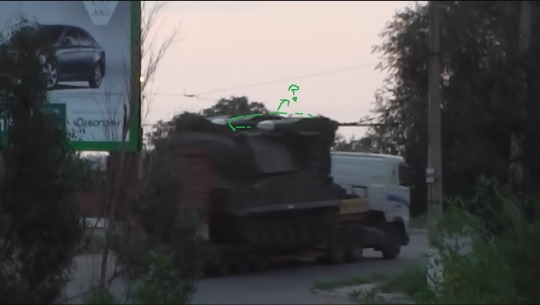
Pardon my terrible MSPaint edit.
The still image is grabbed from a video that was posted by Ukraine’s Defense ministry, but forms part of a broader investigation by Bellingcat, an independent collective of open source researchers, that is too detailed to write here but tracked the movements of the Buk and the truck carrying it to and from the launch site. (link: https://www.bellingcat.com/tag/mh17/)
There was nothing wrong with the plane, the pilot, or the flight path. Passenger planes from Air France, Air India and Singapore Airlines were transiting nearby.
Now, it was obvious that MH17 wasn’t an intentional target. The commanders of the brigade that the Buk belonged to initially posted on social media that they had downed a Ukrainian fighter jet, and then rapidly deleted their celebratory comments when photos of the wreckage appeared online. In my mind, all Russia had to do was acknowledge it was a mistake, or a mistake by ‘separatists’, court martial the guy who pulled the trigger, apologise and fork out some form of compensation. Install a plaque at the site, send flowers, and the world would have eventually looked away from the not-really-civil-war in faraway eastern Europe and their brush with a southeast Asian airline.
Why the lies? Acknowledging the mistake would have been magnitudes cheaper and simpler than the overall war effort. Why was continuing to perpetuate a firehose of falsehoods more important than the truth and trying to repair relations? I couldn’t answer those questions then, but now realise that keeping the information space muddied and flooded with crap is now the norm for disinformation coming out of Russia. Its like they can’t help themselves.
Fast forward to today.
The ‘separatist’ commanders are still involved in the invasion of Ukraine, now unmasked as regular Russians. No commercial flights operate over the country for now. Disinformation, so heavily weaponised during the long months of pandemic lockdown and the former president of the US, runs rife. I posted my own little memorials to the tragedy on social media, year after year, and got bot farm and troll reactions downvoting or pushing them into invisibility. I’m not important enough in the big scheme of things to have a flesh and blood russian troll come to debate me, not that I have the time and energy for it. I’m also not the only person who refuses to forget it, even if the loss pales in significance to the atrocities perpetuated on Ukraine from last year. The lies meant that when the 2022 invasion started along with the inevitable discourse, we also remembered which side was more likely to be lying. The Netherlands and Australia are very supportive of Ukraine, Malaysia is officially neutral (mostly due to convoluted reasoning of America = bad imperialists, America supports Ukraine, so supporting Russia good etc) though many individuals still go against the grain to donate or volunteer. I can’t change what others think, but at least I can prevent them from forgetting.
#long post#very long post#MH17#remembering MH17#invasion of ukraine#disinformation#ukraine#russia#military#politics#personal#russian invasion of ukraine
11 notes
·
View notes
Note
Top 5 TV series!
I forgot I put that 'top five' thing into my queue and wasn't sure what prompted this message until I scrolled back through my blog.
Thanks for the ask, anon! I hope you're ready for some unpopular (and very dated) picks.*
5. Art Attack

Look, I was a lonely kid. For much of my childhood it was just me and my brother... and this very keen British man who taught me how to turn scrap paper, paint, and foil into my own spaceship cockpit. Ideas from this show allowed me to decorate my room as a kid, got me through high school art class, and saved my arse several times when I was a kindergarten teacher in South Korea.
One of the best informational programmes ever made. They should bring it back.
4. Air Crash Investigation
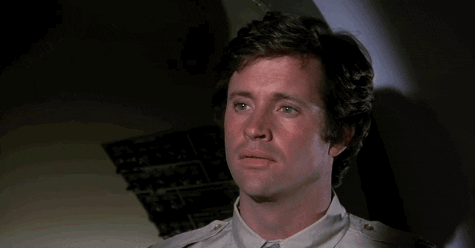
I'm sorry. I know it's cheap. I know it's tacky. I know all that. But I love this show. I love learning about and solving mysteries that aren't murders (sorry Sherlock), and the terrible acting makes it so much better. I can't watch this show with people, because I always try to guess the cause of the crash before the end of the episode and yell it out... and I don't know anything about planes to I'm usually very wrong.
Example:
Me: "It's the bulkhead! Check the bulkhead, you fools!"
Voice over: "The investigators check the bulkhead, but find nothing."
Me: "Yes! Because it's clearly the wings, like I've been saying all along."
3. Justice League Animated Series

I got into this series really late. I'd just moved out of home for the first time to go to film school and was having a hard time making friends. I don't know how it happened, but I somehow ended up watching the entirety of the DC Animated Universe during that time, which is impressive, because internet was expensive and terrible where I was living, so I had to go to the library, download episodes, and walk the 45 minutes home carrying my massive old laptop. It was a feat, but it was worth it. This show did what the Avengers couldn't, made me love superheroes.
2. Yu-Gi-Oh!

When I was 12 I was the best Yugioh player in my school. Sure, it wasn't a big school, and not everyone was into the game, but it was still a big deal for me, especially as I was also the only girl who played. The game has since evolved way beyond my skill level, but at the time, I was a god among mortals. 12 year old mortals, but still. I got up early every morning to see the latest episode, and then I went to school ready to d-d-d-d-duel.
Xena: Warrior Princess

I'm sorry. This show is just so nostalgic for me. For a while, I grew up on a farm with no actual TV signal, but we did have old VHS recordings of Xena and I watched it religiously. Lucy Lawless is amazing and this show is forever the best thing to come out of the 90s (and I say that while also, myself, being a product of the 90s). It has:
Monsters
Magic
Mayhem
Queer Love (not explicitly stated, but this wasn't queerbaiting, this was censorship, they were a couple by the mid point of the series, they just couldn't say it, so instead they made a lot of unsubtle sex jokes and came up with obscure reasons why they always had to kiss to save the world).
Aotearoa (New Zealand is the most beautiful place on the planet, I'm sorry if you disagree, you are wrong).
Tonal whiplash (not just between episodes, but sometimes in the same episode, and it was wild)
One very horny vampire episode
Xena can sometimes fly without any explanation
They met an early reincarnation of Jesus and he was a conman living in India?
You know that scene where Character A gets hurt and Character B goes absolutely feral? This.
Leather bikinis and ninja kicks except it's ancient Greece, maybe
The musical episode was the best episode
They fight on ladders a lot and I just think that's neat
*Disclaimer: I am into more modern and normal things but I'm in a nostalgic mood, so these are the things you get to hear about today.
19 notes
·
View notes
Text

meet SUNIL KOTA
Hey, isn’t that SUNIL KOTA. I thought they went away for the summer? Did you hear they might be a HUMAN? What I do know for certain is that they’re 31, and they’re BRAVE and NAIVE. They’re originally from MOUNTAINSIDE, NJ, USA and have been in FENRIRSWOOD for 1 YEAR living in SUNE’S HARBOUR. I wonder if they still work at FENIR UNIVERSITY as a RESEARCH ASSISTANT. Best if they stay safe for now.
TW: Military mentions; Plane crash; Death/Injury Mentions
On a sufficiently cloudy night—when there were no stars—the little wooded path behind the boy’s home could almost feel like nowhere. Sunil Kota walked it often, forgetting, on nights like these, that neat homes lay just around the bend and that the dull roar in the air was from cars on distant freeways, not from prowling beasts. But the boy himself, the second oldest of four children and his parents’ first son, was a searcher by nature, bold and brilliant, although he sometimes found only the latter quality encouraged by his elders. Still, the former compelled him into the dark, into the unknown, into the endless pursuit of something just out of reach.
When his backyard plot felt too restricting, then, the public nature reserve nearby, an expanse of protected, forested land, provided ample quarries—sightings of fairies, of bigfoots, of winged demons, and of the vengeful specter of one scorned witch who wandered the roads by night. Sunil himself never caught sight of them himself, of course, but his untamable adventurous spirit would compel him to climb constantly upward, into the trees, branch by branch, flashlight in his teeth, as though only getting as high as possible would provide him an ample view.
And that ascent could only prove natural, as it was, of course, an impetus he had inherited from his own father, who had moved to the United States from India as a young boy. At eighteen, the man funded his own education through the Air Force before working briefly as an airline pilot, eventually becoming the co-owner of an FBO at a small airport in suburban New Jersey, specializing in luxury aviation charters. Sunil himself spent long days at the lounge there, watching the pilots fuel up or commandeering the bronze airplane model atop the reception desk as a toy for the afternoon. He successfully dented its wing by throwing it, with one long motion, out onto the tarmac; it did not take off flying the way he might have hoped.
But despite his sometimes-zealous nature, Sunil himself did do relatively well in school, kept focused by his mother’s attention to his studies and by his father’s penchant for discipline. He excelled, in particular, in the sciences, and by the time Sunil was a teenager, he was, likewise, working odd jobs at his father’s business and eventually earning flight hours of his own. Takeoff was exhilarating, an intoxicating, adrenaline-fueled feeling that he would cling to for much of his young life. And while, briefly, he did consider following his dad into the military, Sunil opted instead to study biology and environmental sciences at a New Jersey college, compelled, at least in part, by returning, now as a young man, to the woods in which he had grown up and seeing them (and their animal denizens) beginning to fade.
Living at home, studying, and working as a flight instructor at that same airport, Sunil strove one day to become a pilot biologist for the United States Fish and Wildlife Service. He earned a master’s degree in natural resource management from a prestigious New York university and continued to work toward this goal when a new opportunity arose, largely by a twist of fate. With his family’s blessing, he thus set off for Canada to begin training for the Air Operations team of the British Antarctic Survey, the United Kingdom’s national polar research institute.
He would have to learn to ski, and that was pretty funny, he thought. But the work itself was intensive, including disaster and first-aid preparedness. And setting off, lured by the promise of new adventures in new landscapes, Sunil spent six months working in the field, shuttling the aircraft back and forth from Antarctica, doing general maintenance, and supporting the research teams as appropriate.
During this time, he struck up a friendship with one particular scientist, who became something of a mentor. Sunil was visiting her in the United Kingdom in the winter of 2022 when he, taking a pleasure flight in a rented craft, passed over a small cityship called Fenrirswood. Inexplicably, his plane abruptly veered off course, and he began losing altitude quickly.
He crash-landed in the surrounding wood, his life saved by only his own skill and by the cushions of the trees. But he was in bad shape and would have perished without preternatural intervention.
The young pilot was rescued by members of a local coven, who had been drawn by the disturbance he had caused. They gave him back his strength, asked for it bit by bit, and awed by their gifts, Sunil, scientifically-minded as he was, promised allegiance to them, feeling for the first time that he had finally discovered what he had been looking for all along, some glimpse of the true nature of things.
He remained in Fenrirswood, and with his mentor’s recommendation from his Antarctic expedition, he earned a more permanent research position at Fenrir University. He feels something of a particular calling to advocate publicly for the preservation of wolf territory and habitat.
Today, in a small plane that is rickety but his very own, kept in a hangar some ways outside the city limits, he is more than happy to be the community’s eye in the sky, scoping out intruding game hunters or helping in the search for those who have wandered out and gotten lost. Still, Sunil’s own trusting nature, the part of him that sees the good in the world and those inhabit it, has made him also foolish. He forgets sometimes that he is only mortal and easy fodder for something larger to swallow completely.
Played by Ted. Portrayed by Praneet Akilla.
#death mention tw#injury mention tw#plane crash tw#military tw#nbh.sunesharbour#sp.human#st.nonlocal#all.char
3 notes
·
View notes
Text
Closure for family as body found 56 years after India plane crash
In 1968, an Indian Air Force plane with 102 people went missing. For many years, their fate was a mystery. from BBC News https://ift.tt/oPZ02tM via IFTTT
0 notes
Text
[ad_1] 3 min read Last Updated : Oct 11 2024 | 12:13 AM IST From Tetley Tea to Jaguar Land Rover and Air India, Ratan Tata has checked off almost every item on his bucket list. However, one that remains unfinished is the electric version of his small car, the Tata Nano. A concept entrusted to Coimbatore-based Jayem Automotives (Jayem Auto) is still on the shelves, despite nearly 400 cars being launched, primarily due to Covid-19 and new crash norms. On Thursday, Ola founder Bhavish Agarwal, who considers Tata his hero, recalled this dream project on the X platform, claiming how Tata himself took him to Coimbatore to give him a glimpse of his pet project. They even drove the car together on a test track, an experience that later inspired Agarwal to launch Ola Electric. Click here to connect with us on WhatsApp “One day in 2017, I got a call from him asking me to come to Mumbai. He just said, ‘Bhavish, I want to take you somewhere and show you something exciting’. We flew in his plane to Coimbatore to see his personal project of making electric vehicles (EVs) out of the Tata Nano! He was so passionate and excited about EVs. He even drove me in one on a test track and then pointed out such detailed improvements to the engineers. That was the day Ola Electric really got started,” Agarwal said. In 2015, Tata thought about creating a low-cost EV, which gave birth to a product called the Neo EV. It was jointly developed by Jayem and the Tata group. The Jayem Neo EV, or the electric Tata Nano as it is often referred to, was engineered and developed by Jayem in close partnership with Tata, under the supervision of Emeritus Chairman Ratan Tata. According to media reports, two versions were planned: a 48-volt version and a more powerful 72-volt version. The project gained momentum in 2018 when Jayem produced a batch of 400 cars, supplying them to Ola Cabs for use in Hyderabad and Bengaluru at the onset of the pandemic. “I don’t want to talk about the EV project. Why should we discuss a project that didn’t succeed due to many government regulations? Covid-19 and the new crash regulations affected the expansion of the project,” said Jayem Auto Managing Director J Anand. “We still have a good relationship with the group,” he added. According to an Autocar India report, Neo EV was never put on sale due to several factors, one being that engineers were still working to reduce the costs of the 72-volt version. In addition to the pandemic, stringent crash test norms also contributed to the project’s downfall. Currently, Jayem Auto is a joint venture between Anand’s company and the Chennai-based Murugappa Group-promoted Tube Investments of India (TII). Through its subsidiary, TI Clean Mobility, TII acquired a 50 per cent stake in Jayem Auto last year. At present, Jayem Auto is designing, developing, testing, and manufacturing a wide range of automotive components, systems, and prototypes, with deep expertise in EVs. Anand said he has no plans to revive the project. First Published: Oct 11 2024 | 12:12 AM IST [ad_2] Source link
0 notes
Text
[ad_1] 3 min read Last Updated : Oct 11 2024 | 12:13 AM IST From Tetley Tea to Jaguar Land Rover and Air India, Ratan Tata has checked off almost every item on his bucket list. However, one that remains unfinished is the electric version of his small car, the Tata Nano. A concept entrusted to Coimbatore-based Jayem Automotives (Jayem Auto) is still on the shelves, despite nearly 400 cars being launched, primarily due to Covid-19 and new crash norms. On Thursday, Ola founder Bhavish Agarwal, who considers Tata his hero, recalled this dream project on the X platform, claiming how Tata himself took him to Coimbatore to give him a glimpse of his pet project. They even drove the car together on a test track, an experience that later inspired Agarwal to launch Ola Electric. Click here to connect with us on WhatsApp “One day in 2017, I got a call from him asking me to come to Mumbai. He just said, ‘Bhavish, I want to take you somewhere and show you something exciting’. We flew in his plane to Coimbatore to see his personal project of making electric vehicles (EVs) out of the Tata Nano! He was so passionate and excited about EVs. He even drove me in one on a test track and then pointed out such detailed improvements to the engineers. That was the day Ola Electric really got started,” Agarwal said. In 2015, Tata thought about creating a low-cost EV, which gave birth to a product called the Neo EV. It was jointly developed by Jayem and the Tata group. The Jayem Neo EV, or the electric Tata Nano as it is often referred to, was engineered and developed by Jayem in close partnership with Tata, under the supervision of Emeritus Chairman Ratan Tata. According to media reports, two versions were planned: a 48-volt version and a more powerful 72-volt version. The project gained momentum in 2018 when Jayem produced a batch of 400 cars, supplying them to Ola Cabs for use in Hyderabad and Bengaluru at the onset of the pandemic. “I don’t want to talk about the EV project. Why should we discuss a project that didn’t succeed due to many government regulations? Covid-19 and the new crash regulations affected the expansion of the project,” said Jayem Auto Managing Director J Anand. “We still have a good relationship with the group,” he added. According to an Autocar India report, Neo EV was never put on sale due to several factors, one being that engineers were still working to reduce the costs of the 72-volt version. In addition to the pandemic, stringent crash test norms also contributed to the project’s downfall. Currently, Jayem Auto is a joint venture between Anand’s company and the Chennai-based Murugappa Group-promoted Tube Investments of India (TII). Through its subsidiary, TI Clean Mobility, TII acquired a 50 per cent stake in Jayem Auto last year. At present, Jayem Auto is designing, developing, testing, and manufacturing a wide range of automotive components, systems, and prototypes, with deep expertise in EVs. Anand said he has no plans to revive the project. First Published: Oct 11 2024 | 12:12 AM IST [ad_2] Source link
0 notes
Text
AMY JOHNSON
AMY JOHNSON
1 July 1903 – c. 5 January 1941
ENGLISH PILOT, DISAPPEARED AGED 37
Amy Johnson was an English aviator. She had trained to become a qualified ground engineer serving planes, and became qualified as a pilot in 1923.
Johnson was born in Hull, East Riding of Yorkshire, England, into a family of fish merchants. She went to University to study economics and worked in London as a secretary. She was never fulfilled with secretary work and yearned for more. She was working for a solicitor who flew as a hobby, she took a flight in 1926 and fell in love with flying and became one of the first women to gain a licence.
Johnson became a celebrity due to her flying achievements. In her Gipsy Moth aircraft ‘Jason’ she flew solo from England to Australia in 1930. In 1931 she flew to Japan and back and din 1932 she made a record solo flight to Cape Town and back. With her husband, she made a record flight in 1933 across the Atlantic Ocean in 39 hours. In 1934, they flew to India in 22 hours and in 1936 she made a new solo record for flying from London to Cape Town.
She was married to pilot James Mollison; the marriage was troubled due to his affairs with numerous women and drinking. The couple divorced in 1938.
During World War II, Johnson worked for the Air Transport Auxiliary which delivered aircrafts to those when needed. Johnson flew aircrafts from factories to RAF bases.
Johnson most likely died when her plane disappeared in 1941. It is believed that her plane crashed over the Thames Estuary during World War II. Her body was never recovered and it was presumed she had drowned. Johnson once said, “I’ll fly till I die… and I hope I die flying.���
Katharine Hepburn’s character in Christopher Strong (1933) was inspired by Johnson.
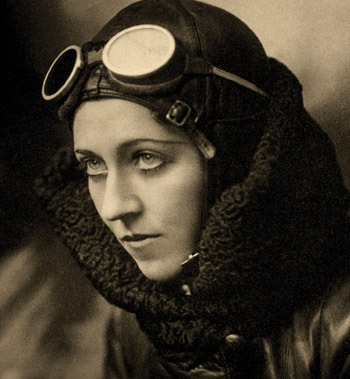
#amyjohnson
0 notes
Text
For memorial day, I want to remember my veterans (the veterans I researched). I'm going to put their names and one fact that stuck with me below.
Arthur Clifford Kimber - He named all three of the planes he flew after his best friend Nick.
Hiram Baker Fisher J.r - He died two days before being comissioned.
Fritz Barkan J.r. - He left behind a wife named Elizabeth Reynolds.
William M. Bassett - He was a theater techie, and had a patent for a dolly system.
Howard D. Benson - He was an athlete and part of the student government.
Jack W. Bleasdale - He did theater in highschool. He died in a POW camp, leaving behind a wife named Ellaoise.
Russell V. Braga - The last news his family received was from his friend saying they had been separated during battle in Iwo Jima.
Julian G. Burnette J.r. - He was only 22 when he died.
Samuel L. Carson - He wrote home on the day he died that his orders to come home had finally come through.
Bernard J. Casaurang - He was president of the high school glee club and worked as an actor.
William A. Cashin - He died while in pilot training.
Harvey B. Clarke - He was a cheerleader, star athlete, and popular guy in highschool. He worked as a figher fighter.
Deane P. Clementson - His plane had been damaged on a past mission. Nevertheless he and his crew accepted another mission, which would be his last.
Frederick B. Cooley - He did boxing.
George B. Culiver - He was killed at Anzio. I don't have much information on him, which saddens me.
Norman B. Dahlin - He worked as a medical administrative corps officer before joining the airforce.
J.R. (Frank) Dally - He graduated in 1944. I don't have much information on him either.
Albert D. Davies - He fought in India and Africa. He was killed in a transport plane crash in the US after coming home.
Morian C. Deal - He worked as a butcher with his father at their family butchery.
Phillip S. Doty - He died of severe burns. He suffered for several months before dying.
Henry Howard Estes - He was listed as missing before being declared KIA
Glen D. Faris - He was part of the royal canadian air force. He was only 19 when he died.
James R. Field - He died as a POW of preventable illnesses.
John D. Fredericks III - He was a huge part of highschool student government. He was killed by machine gun fire.
George E. Fuchs - He was a star football player in high school. He had a really nice smile.
Thomas D. Gorman - Notice of his death arrived only a few days after both his brother and father were released from the military.
Robert W. Griggs J.r. - He was part of an acapella group and worked as an actor.
William R. Gunther - He was a star basketball player.
Alvin W. Harroun - He went to Stanford University and was part of Delta Upsilon fraternity.
Bryson R. Hills - His plane was called ‘The Flaming Mayme’.
Michael K. Hite - He was part of the marines. I know very little about him.
Robert C. Hoffman - I don't know anything about Robert besides his name. I wish I knew more.
Theodore B. Holmes - He had a daughter named Carolyn who was almost two when he died.
William H. Houston - He worked as a medic in the airforce.
Jack E. Howell - He wanted to be a pediatrician.
Paul H. Jungermann - He was a physical therapist and managed two floors of the hospital he worked in.
Donald A. Kelly - He worked with amphibious vehicles (ducks). He was killed in a car crash.
Lowell F. Kuehnle - He was listed as missing in action before being declared KIA.
Emil H. Kunz - He was an aviation teacher.
Wilbur C. Lauridsen - He was part of the Palo Alto amatauer radio association, and they still celebrate his life.
Adelbert (Jack) Lawrence - He played basketball and was in the glee club.
Norton Le Goullon - He had four siblings.
Sidney Levy Jr. - He was a Sea Scout and an air raid messenger.
Andrew E. Lincoln - He was a sea scout. He was only 18 when he died.
William L. Longmire - He was a POW and died of preventable illnesses.
Herbert C. Love - He was killed in Normandy after D-Day.
Louis M. Love - He was a thespian. He was ranked number one in an aviation class of 2500 cadets.
Wendell H. Marlowe - He was killed on Christmas.
Phil E. Mattingly - His family held out hope for years that he was still alive despite being MIA. He was declared dead in 1946.
Virginia Ruth Mayer - Her mother worked as a nurse during WWI, and Virginia followed in her footsteps.
Robert V. Mitchell - I don't know much about his life. In his photos, he looks kind.
William H. Moody - He went by Howie.
Eugene L. Morgan - He has the same birthday as me. He was born 7/17/1917
Hugh H. Morris - He was a swimmer.
Karl E. Miller - He died of dysentery as a POW.
William C. Muldoon - He was executed with his crew when they crashed in enemy territory.
Margaret N. Neubauer - She was born in Santiago, Chile
David J. Nolan - He worked as an actor.
Charles A. Norby - His plane was called ‘Shack Rat’. He was murdered in cold blood by a Nazi soldier after he became a German POW.
Frederick H. Palmer - His plane was named the ‘Wing Dinger’.
Harold H. Piggott - He was popular in highschool and had the affectionate nickname 'Piggy'.
Durham W. Porter Jr. - He was a boy scout.
Forrest Wayne Reeves Jr - He was a civilian construction worker on a military base when he was killed.
Robert H. Reeves - When he died, he left behind a 13 month old son.
Alfred J. Siverstein - He majored in art during college. He went by the nickname 'Bud'.
Robert E. Slater - He was on the USS Bonefish, a submarine which still has not been found.
Carl W. Stuke Jr. - He lived in Chile for a while.
Donald J. Stuke - He is buried next to his brother Carl.
Lyle A. Taggart - In high school, He was voted most popular guy in 1939, as well as best dancer (boy).
James F. Taylor - I know nothing about him besides his name. I hope his family remembers him.
Arthur D. Wagner - He was a mathematics major in college.
Andrew G. Webb - He was an actor and a star basketball player in high school.
Howard C. Weller - He was part of his high school choir, and came back to sing with them while he was on military leave.
John Austin Widsteen - His body was not identified and he was not formerly buried until six decades after his death.
Frederick M. Yamamoto - He was so loved and respected. He was smart, dedicated, and died fighting for a country that didn't fight for him.
Albert T. Lavers Jr. - When he died, he left behind a 3 year old daughter named Suzanne.
Marcus Paul Merner - He played guitar.
William Henry Suffern Jr. - He graduated from Paly in 1947.
Brian Adam - He was an artist.
Billie M. Bedsworth - He lost his life saving his friend. The comments on his memorial page show that he was so loved.
Arthur F. Gleim Jr. - He was part of the sound crew, audio visual club, and audio visual crew in high school.
Roger C. Hallberg - His family is still looking for closure to this day. He was last seen wearing a wrist watch and his wedding ring.
Barry ‘Buck’ Dean Kingman - He was a stand up guy. Everyone I've spoken to about him adored him. He could have done so much if his life wasn't taken during a war he didn't believe him.
Richard Arlan Stone - He was killed when he stayed behind to protect wounded soldiers.
Thomas L. Vendelin - He wanted to be the greatest drummer the world had ever seen.
If you'd like to read more about any of these people, feel free to read the (unedited) book!
0 notes
Text
Events 10.29 (after 1950)
1953 – BCPA Flight 304 DC-6 crashes near San Francisco. 1955 – The Soviet battleship Novorossiysk strikes a World War II mine in the harbor at Sevastopol. 1956 – Suez Crisis begins: Israeli forces invade the Sinai Peninsula and push Egyptian forces back toward the Suez Canal. 1957 – Israel's prime minister David Ben-Gurion and five of his ministers are injured when Moshe Dwek throws a grenade into the Knesset. 1960 – An airplane carrying the Cal Poly football team crashes on takeoff in Toledo, Ohio. 1964 – The United Republic of Tanganyika and Zanzibar is renamed to the United Republic of Tanzania. 1964 – Biggest jewel heist; involving the Star of India (gem) in the American Museum of Natural History in New York City by Murph the Surf and gang. 1967 – Montreal's World Fair, Expo 67, closes with over 50 million visitors. 1969 – The first-ever computer-to-computer link is established on ARPANET, the precursor to the Internet. 1972 – The three surviving perpetrators of the Munich massacre are released from prison in exchange for the hostages of the hijacked Lufthansa Flight 615. 1980 – Demonstration flight of a secretly modified C-130 for an Iran hostage crisis rescue attempt ends in a crash landing at Eglin Air Force Base's Duke Field, Florida, leading to the cancellation of Operation Credible Sport. 1985 – Major General Samuel K. Doe is announced as the winner of the first multi-party election in Liberia. 1986 – British Prime Minister Margaret Thatcher opens the last stretch of the M25 motorway. 1991 – The American Galileo spacecraft makes its closest approach to 951 Gaspra, becoming the first probe to visit an asteroid. 1994 – Francisco Martin Duran fires over two dozen shots at the White House; he is later convicted of trying to kill U.S. President Bill Clinton. 1998 – In South Africa, the Truth and Reconciliation Commission presents its report, which condemns both sides for committing atrocities. 1998 – Space Shuttle Discovery blasts off on STS-95 with 77-year-old John Glenn on board, making him the oldest person to go into space at that time. 1998 – ATSC HDTV broadcasting in the United States is inaugurated with the launch of the STS-95 space shuttle mission. 1998 – While en route from Adana to Ankara, a Turkish Airlines flight with a crew of six and 33 passengers is hijacked by a Kurdish militant who orders the pilot to fly to Switzerland. The plane instead lands in Ankara after the pilot tricked the hijacker into thinking that he is landing in the Bulgarian capital of Sofia to refuel. 1998 – Hurricane Mitch, the second deadliest Atlantic hurricane in history, makes landfall in Honduras. 1998 – The Gothenburg discothèque fire in Sweden kills 63 and injures 200. 1999 – A large cyclone devastates Odisha, India. 2002 – A fire destroys a luxurious department store in Ho Chi Minh City, where 1,500 people are shopping. More than 60 people die and over 100 are unaccounted for in the deadliest peacetime disaster in Vietnam. 2004 – The Arabic-language news network Al Jazeera broadcasts an excerpt from a 2004 Osama bin Laden video in which the terrorist leader first admits direct responsibility for the September 11, 2001 attacks and references the 2004 U.S. presidential election. 2005 – Bombings in Delhi, India kill more than 60. 2008 – Delta Air Lines merges with Northwest Airlines, creating the world's largest airline and reducing the number of US legacy carriers to five. 2008 – A pair of deadly earthquakes hits Baluchistan, Pakistan, killing 215. 2012 – Hurricane Sandy hits the east coast of the United States, killing 148 directly and 138 indirectly, while leaving nearly $70 billion in damages and causing major power outages. 2014 – A mud slide; the 2014 Badulla landslide, in south-central Sri Lanka, kills at least 16 people, and leaves hundreds of people missing. 2015 – China announces the end of its one-child policy after 35 years. 2018 – A Boeing 737 MAX plane crashes after taking off from Jakarta, Indonesia killing 189 people on board.
2 notes
·
View notes
Text
Why Do Indian Airlines Keep Crashing? Unveiling the Challenges of a Soaring Industry
After a 13-hour delay, a passenger angrily slapped pilot Radhika Apte. She shared on her Instagram that she and all the passengers were stuck on the aerobridge for hours without water or access to toilets. 10-hour flight delays have become common, and airlines only offer a sorry excuse, if you're lucky.
For India to become the 'Golden Bird,' the aviation industry needs to thrive. Think about it. Has your flight been delayed for hours in the last few months? Has your baggage been misplaced? Or did you miss your flight due to a last-minute terminal change? If so, this blog is for you.
Today, we'll explore the harsh realities of India's aviation industry. We'll understand why Indian airlines are failing, the challenges of running an airline business in India, how airlines make money, and the problems they face today. There are 5 core reasons for these issues. If we can address them, no one can stop us from becoming the 'Golden Bird.'
This blog is especially interesting for travel enthusiasts like you and me. If you agree with us, like the blog and follow us.
India is the world's fastest-growing aviation market. Last year, 15 crore people traveled domestically and 7 crore internationally. This number is more than the population of 180 countries, demonstrating how many Indians love to fly. There's a market principle: The more demand, the more revenue, and the more revenue, the more profit. But Indian airlines are different. In the past few years, Jet Airways shut down, GoAir declared bankruptcy, and Kingfisher Airlines crashed. Why is this happening in a market with so much demand?
Let's delve into the first reason. Reason number one is capital. Money is required to run any business, but an airline business requires a lot of money. Richard Branson, founder of Virgin Atlantic Airline, famously said, "If you want to be a millionaire, start with a billion dollars and then start an airline." JRD Tata, India's first aviator who started Air India, understood this as well. He knew operating airlines was tough.
What can be the biggest expense of an airline? Can you guess? Of course, it's the planes themselves. Airlines either buy aircraft directly from Boeing or Airbus or lease them, paying rent. IndiGo recently placed the biggest purchase order in aviation history, purchasing 500 A320 planes from Airbus for delivery between 2030 and 2035. Air India, on the other hand, leases Boeing planes from the American company Delta. Lease essentially means renting, so they have monthly payments. The cost of buying a plane is high, so companies use different methods to manage these high costs.
Now, let's discuss the second major cost. Airlines spend 35-50% of their budget on fuel, which is aviation fuel or ATF. It's a mixture processed from crude oil that powers jet engines and ensures they function well at high altitudes without the fuel freezing. ATF prices in India are linked to international crude oil prices. Premium airlines like Kingfisher lost a lot of money due to a price jump between July 2007 and 2008. Since India doesn't have its own oil reserves and must import it, Gulf and American airlines have an advantage because they control oil or the dollar, while India controls neither. Price fluctuations significantly affect Indian airlines.
The second reason is uncertainty. If you've traveled around Delhi during winters, you've likely heard of the "fog season." Low visibility can ground aircrafts. Pilots and passengers are ready, but the flight cannot take off until visibility improves. As frequent flyers, we understand that some things are beyond the airlines' control. However, if a flight is delayed, the airlines should provide accurate information to passengers. For significant delays, they should arrange food or allow passengers to cancel their flights. This is within the airline's control. Slapping the pilot is an extreme and unacceptable reaction. But if we know flights won't fly due to fog, why aren't better policies implemented? Passengers miss flights for being a minute late, and airlines charge extra for even 1 kg of overweight luggage, but they face no fines or compensation for their mistakes. It seems the responsibility lies solely with the passenger, despite the saying "the customer is king." Once we check in our luggage, we're at the airline's mercy, forced to comply with their policies. This is a surefire way to anger customers. Imagine someone traveling from Delhi to Bangalore for a one-day meeting and their flight is delayed by 10 hours. In such a situation, the delay makes the travel pointless. Shouldn't they have the option to cancel the flight?
Events like COVID-19 negatively impact the global aviation industry. In 2020, according to estimates, the global airline industry suffered losses of $84 billion. As pandemic restrictions lifted, the aviation sector began to pick up. These losses reduced to $51 billion in 2021 and $11.6 billion in 2022.
During peak seasons like Diwali and New Year, demand for travel is high, but it dips significantly during the rest of the year. This uneven distribution of demand creates challenges for airlines. Airlines rely heavily on business travelers for weekday travel.
The third reason is operations. Airlines generate revenue through three main avenues: passenger revenue, cargo revenue, and food and beverage revenue. Passenger revenue includes ticket sales and convenience fees, which some argue shouldn't exist since the booking is done on the airline's website. Additional passenger revenue comes from modifications, cancellations, seat selection, excess baggage, and special service requests. Every airline also deals in cargo, either through dedicated cargo flights or parcel services. Full-service airlines like Air India and Vistara offer complimentary meals on domestic flights, while budget airlines like IndiGo, SpiceJet, and GoAir don't. Passengers on these airlines can pre-book meals or purchase them from the in-flight menu.
Typically, Indian commercial airlines generate most of their revenue from passenger-related services. However, the unpredictable nature of passenger numbers makes it difficult for airlines to accurately predict the number of airplanes needed. On the other hand, operational expenses are high. Pilot salaries, cabin crew salaries, engineer salaries, and other crew member salaries are significant expenses for airlines. When planes are flying, they consume fuel, and when they're on the ground, airlines incur grounding charges, which are essentially aircraft parking charges. In India, domestic and international flights take off from the same terminals, increasing these charges. Additionally, grounded aircraft from insolvent airlines occupy space at airports without paying for it.
As we learned earlier, Boeing and Airbus are foreign companies. For major repairs, planes need to be sent to these manufacturers' facilities, which can be outside India. Delays in these repairs can ground airplanes and endanger passenger safety, making them non-negotiable. GoAir, a low-cost airline that shut down last year, is a prime example. They had to ground most of their planes because their engines turned out to be faulty. Pratt & Whitney, the engine manufacturer, couldn't deliver spare parts on time, leading to the airline's shutdown.
The government also plays a significant role in the aviation industry. The policies they create can heavily impact airline businesses. For instance, during the lockdown from May 2020 to August 2022, the government mandated minimum fares between Rs. 2,900 and Rs. 8,800 for flights less than 40 minutes. This price cap created major problems for airlines. Additionally, both VAT and excise duty are levied on aviation turbine fuel (ATF). During COVID-19, Indian refiners prioritized exporting ATF over supplying it domestically, leading to an export tax on ATF. These high taxes increase fuel costs, squeezing airline profit margins. Furthermore, VAT rates on ATF vary by state, similar to petrol prices. So, if an airline frequently lands at an airport with a high VAT rate, they incur higher fuel costs. All these factors put Indian airlines at a disadvantage.
The final reason is brand loyalty. While India has a high total number of airline passengers due to its large population, per capita travel is low. Only 1% of India's population contributes to about 45% of all flights. This makes it challenging to build and maintain brand loyalty. Consider Kingfisher Airlines, a former premium airline, and IndiGo, a budget airline. Kingfisher was the first to offer complimentary headphones and provided ample legroom, making economy class feel more aspirational. IndiGo, on the other hand, focused on a bare-bones approach with minimal legroom and no complimentary meals. Today, IndiGo holds 62% of India's domestic air travel market share, while Kingfisher is defunct. For a large part of the Indian population who haven't even been on a plane, the experience of air travel itself is a novelty. Features and amenities come secondary to affordability. In a market where customers prioritize the cheapest option, building brand loyalty is difficult. Additionally, negative incidents can quickly tarnish an airline's reputation. For instance, some Boeing aircraft have experienced issues like wheels falling off during takeoff, engines catching fire, and sudden door openings. These incidents scare people and make them hesitant to fly. Similarly, if an airline misplaces your luggage, you'd likely be hesitant to fly with them again.
In conclusion, several factors contribute to the challenges faced by the Indian aviation industry. Fuel prices and dollar rates are beyond India's control. Government taxes are high, and policy changes can significantly impact businesses. Passenger concerns arise due to bad weather and mismanagement. Brand loyalty is difficult to build due to a combination of factors: limited travel experience for a large portion of the population, focus on affordability over brand differentiation, and potential negative incidents. Despite these challenges, the aviation industry remains crucial for India's growth. The country's diverse geography can be better connected through air travel, facilitating trade, tourism, and overall development. The real potential lies in tier 2 and tier 3 cities, where a growing population aspires to travel. As disposable incomes rise, so will the number of air travelers in India. These two factors are directly linked.
If you found this blog interesting, please share it with your friends and subscribe to our channel. The airline business teaches us a valuable lesson: to be profitable, you must keep your costs low. To make India the 'Golden Bird' again, we need to make air travel accessible. The right policies must be implemented to balance business needs with consumer satisfaction. Airlines need to build strong brands that prioritize customer experience. Sharing this message is important because a thriving aviation industry can significantly contribute to India's progress.
Thank you for reading this blog! Your support means a lot to us. Don't forget to follow us.
1 note
·
View note
Text
Today Himachal Pradesh news update
Bijli Mahadev Temple ropeway to be ready by 2026. Earthquake of magnitude 3.2 hits Lahul Spiti, Himachal Pradesh The labours from Jharkhand killed in avalanche in Kinnaur Himachal Pradesh. India Air force's MIG Planes crashed near kangra District in Himachal Pradesh.
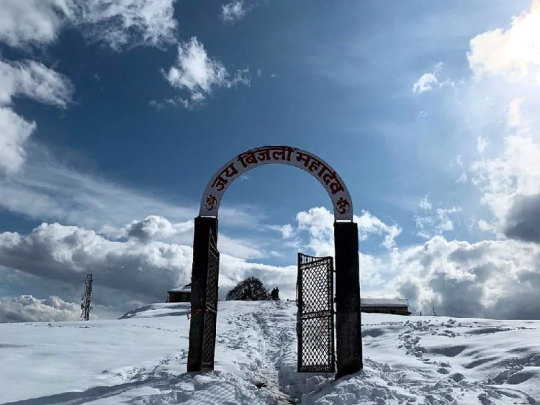
0 notes
